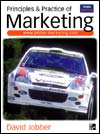Answer the self-test questions below and then click on 'submit' to send your answers. The test will be marked instantly, so that you can see how well you have done.
 |
1 |  | 
The marketing activity of dividing markets up into smaller units with similar needs and characteristics is known as: |
|  | A) | Market segmentation |
|  | B) | Target marketing |
|  | C) | Market penetration |
|  | D) | Relationship marketing |
|  | E) | Mass marketing |
 |
 |
2 |  | 
Marketers often change the elements of the marketing mix in order that it is perceived to be unique. This process is known as: |
|  | A) | Differentiation |
|  | B) | Market segmentation |
|  | C) | Direct marketing |
|  | D) | Defensive strategy |
|  | E) | Target marketing |
 |
 |
3 |  | 
Target marketing begins with a three-stage process. The first stage begins with: |
|  | A) | Understanding the opportunities and threats within the market |
|  | B) | Developing a thorough understanding of the needs and characteristics of the target market |
|  | C) | Grouping customers according to their needs and characteristics |
|  | D) | Choosing which segments to target |
|  | E) | An understanding of ways in which to achieve competitive advantage |
 |
 |
4 |  | 
Psychographic segmentation refers to: |
|  | A) | Benefits sought |
|  | B) | Social class |
|  | C) | Lifestyle and personality |
|  | D) | Cognitive dissonance |
|  | E) | Gender and age |
 |
 |
5 |  | 
When a new product is launched, segmentation by purchase behaviour will lead the marketer to target which of the following: |
|  | A) | Regular users |
|  | B) | Wealthy people |
|  | C) | Extroverts |
|  | D) | Innovators |
|  | E) | Status conscious |
 |
 |
6 |  | 
Demographic segmentation divides the market by: |
|  | A) | Location or region |
|  | B) | Age, gender or family life stage |
|  | C) | Perceptions, beliefs and values |
|  | D) | Socio-economic variables |
|  | E) | Religion and culture |
 |
 |
7 |  | 
The ACORN classification is used in which method of market segmentation? |
|  | A) | Socio-economic |
|  | B) | Geodemographic |
|  | C) | Behavioural |
|  | D) | Geographic |
|  | E) | Psychographic |
|  | F) | Industrial |
 |
 |
8 |  | 
In business-to-business marketing, macro-segmentation focuses on which characteristics? |
|  | A) | Size, buying behaviour and decision making |
|  | B) | Price sensitivity of different organisations |
|  | C) | The decision-making unit |
|  | D) | Size, industry and geographic location |
|  | E) | Political and environmental issues |
 |
 |
9 |  | 
In industrial markets, what do the initials S.I.C. stand for? |
|  | A) | Segmented Industrial Classification |
|  | B) | Strategic Industrial Classification |
|  | C) | Standard Industrial Classification |
|  | D) | Standard Institutional Classification |
 |
 |
10 |  | 
In industrial marketing, a useful segmentation variable would be: |
|  | A) | ACORN classification |
|  | B) | Buy class |
|  | C) | Psychographics |
|  | D) | Cultural sub-group |
|  | E) | Product class |
 |
 |
11 |  | 
When a company develops a single marketing mix for an entire market this is called Industrial Marketing. |
|  | A) | True |
|  | B) | False |
 |
 |
12 |  | 
A company developing a focused marketing strategy would do which of the following? |
|  | A) | Develop a single marketing mix for a single segment |
|  | B) | Develop a number of different marketing mixes for a single segment |
|  | C) | Develop a single marketing mix for each individual customer |
|  | D) | Focus on the entire mass market with no segmentation |
|  | E) | Focus on individuals in the decision-making unit |
 |
 |
13 |  | 
A company practising customised marketing would develop a marketing mix for each customer. |
|  | A) | True |
|  | B) | False |
 |
 |
14 |  | 
The objective of following a positioning strategy is: |
|  | A) | To become the largest company in the industry |
|  | B) | To carry out regular audits to understand the current position |
|  | C) | To relocate, where necessary, to be near to customers |
|  | D) | To adopt the same position in the market as well-established successful competitors |
|  | E) | To create and sustain a distinctive place in the market |
 |
 |
15 |  | 
A useful tool for determining the position of a brand in the marketplace is: |
|  | A) | A marketing audit |
|  | B) | Secondary research |
|  | C) | A perceptual map |
|  | D) | A marketing information system |
|  | E) | A SWOT analysis |
 |




 2003 A McGraw-Hill Online Learning Centre
2003 A McGraw-Hill Online Learning Centre